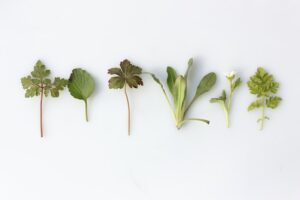Lettuce is a popular vegetable that is easy to grow in a home garden. Whether you are an experienced gardener or just starting out, growing lettuce can be a fun and rewarding experience. In this article, we will take a look at how to plant lettuce in a home garden.

Step 1: Choose the Right Lettuce Variety
The first step in planting lettuce is to choose the right variety. There are many different types of lettuce to choose from, including butterhead, crisphead, romaine, and looseleaf. Each variety has its own unique characteristics and is best suited for different growing conditions.
When choosing a variety of lettuce, it is important to consider the climate and growing conditions in your area. Some varieties of lettuce, such as crisphead lettuce, prefer cooler temperatures and are best grown in the spring and fall. Other varieties, such as looseleaf lettuce, are more tolerant of hot weather and can be grown throughout the summer.
Step 2: Prepare the Soil
Once you have chosen the right variety of lettuce, the next step is to prepare the soil. Lettuce grows best in loose, well-draining soil that is rich in organic matter. Before planting, amend the soil with compost or well-rotted manure to provide the necessary nutrients for healthy growth.
It is also important to ensure that the soil is free of rocks and debris that could interfere with the growth of the lettuce. Use a garden rake to remove any rocks or large clumps of soil and create a smooth, even surface.

Step 3: Plant the Lettuce
When it comes to planting lettuce, there are two options: direct seeding or transplanting. Direct seeding involves sowing the lettuce seeds directly into the soil, while transplanting involves starting the seeds indoors and then transplanting the seedlings into the garden.
If you choose to direct seed, sow the lettuce seeds about 1/4 inch deep and 1 inch apart. Cover the seeds with a thin layer of soil and water lightly. Lettuce seeds typically germinate within 7-14 days.
If you choose to transplant, start the seeds indoors 4-6 weeks before the last frost date in your area. When the seedlings are 2-3 inches tall, transplant them into the garden, spacing them 6-8 inches apart.
Step 4: Water and Fertilize
Once the lettuce is planted, it is important to keep the soil moist but not waterlogged. Water the lettuce deeply once or twice a week, depending on the weather conditions in your area. Be sure to water the soil, not the leaves, to prevent disease.
Fertilize the lettuce once a month with a balanced fertilizer, such as a 10-10-10 or 12-12-12 formula. Be sure to follow the manufacturer’s instructions for application rates and timing.
Step 5: Harvesting the Lettuce
Lettuce can be harvested when the leaves are mature, typically 45-60 days after planting. To harvest the lettuce, use a sharp knife or scissors to cut the leaves at the base of the plant.

Harvesting lettuce regularly will encourage new growth and prolong the growing season. As the weather gets warmer, the lettuce may bolt (go to seed), producing bitter leaves. To prevent this, harvest the lettuce before it reaches maturity and before the weather gets too hot.
Growing lettuce in a home garden is a fun and rewarding experience. By choosing the right variety, preparing the soil, planting the lettuce, and caring for it properly, you can enjoy a bountiful harvest of fresh, delicious lettuce throughout the growing season. Whether you are a seasoned gardener or just starting out, growing lettuce is a great way to get your hands dirty and enjoy the fruits (and vegetables) of your labor!








